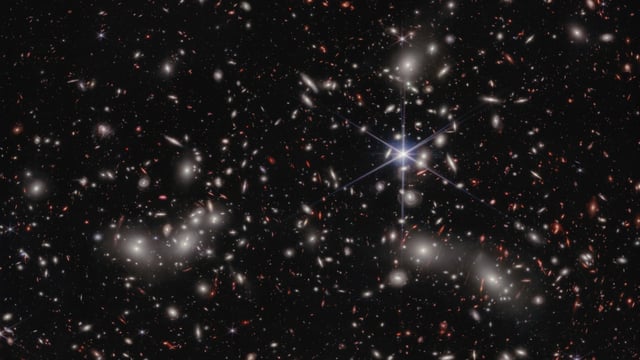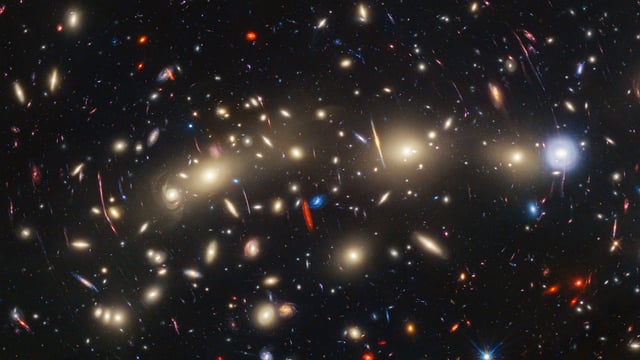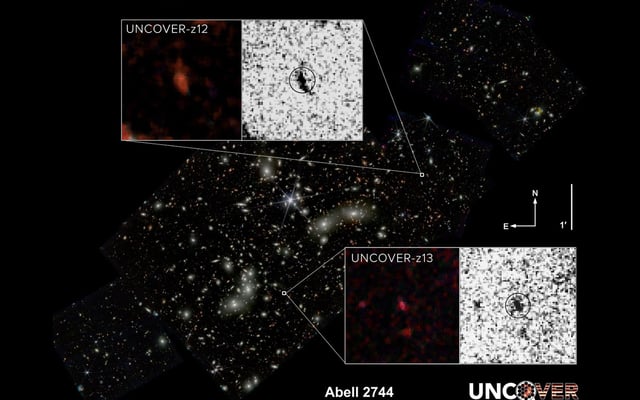Overview
- The James Webb Space Telescope (JWST) has discovered the second and fourth most distant galaxies ever seen, located in Pandora’s Cluster, about 3.5 billion light years away from us.
- The two galaxies, designated UNCOVER-z13 and UNCOVER-z12, have a redshift of 13.079 and 12.393 respectively, indicating their extreme distance.
- Unlike other galaxies at similar distances, these galaxies are larger and have structure, appearing elongated and fluffy, challenging our understanding of early galaxy formation.
- The light from these galaxies is ancient, about three times older than the Earth, providing a window into the early universe and the formation of the first galaxies.
- The galaxies are young, have a low abundance of heavy elements and are actively forming stars, supporting the Big Bang theory.



